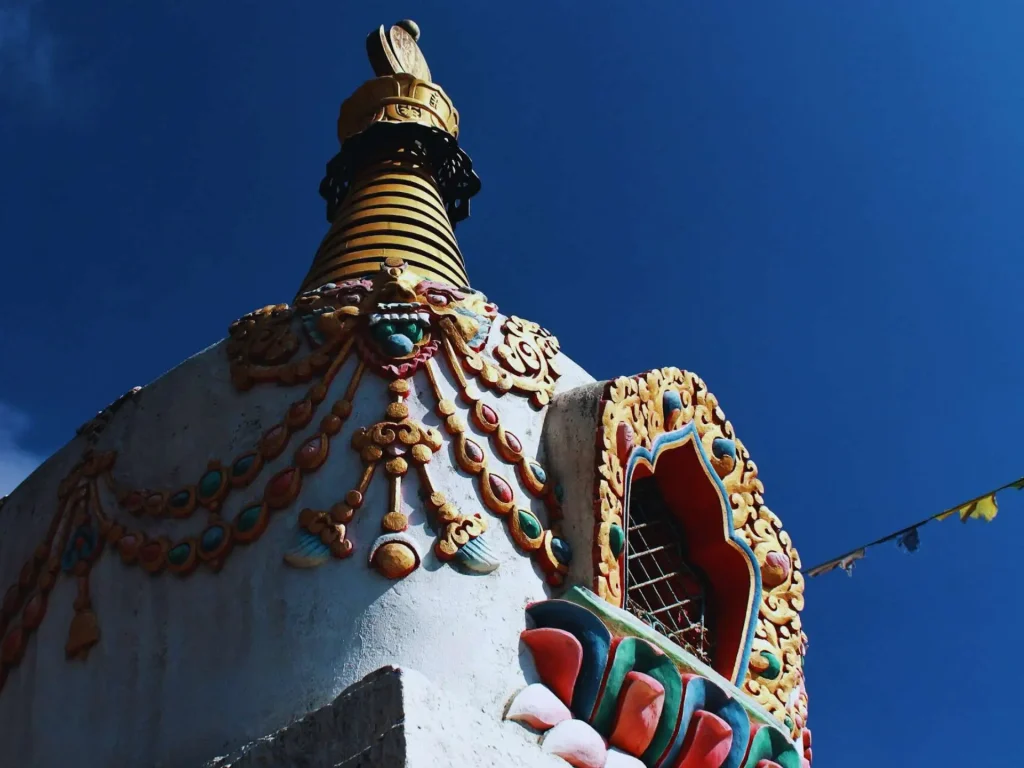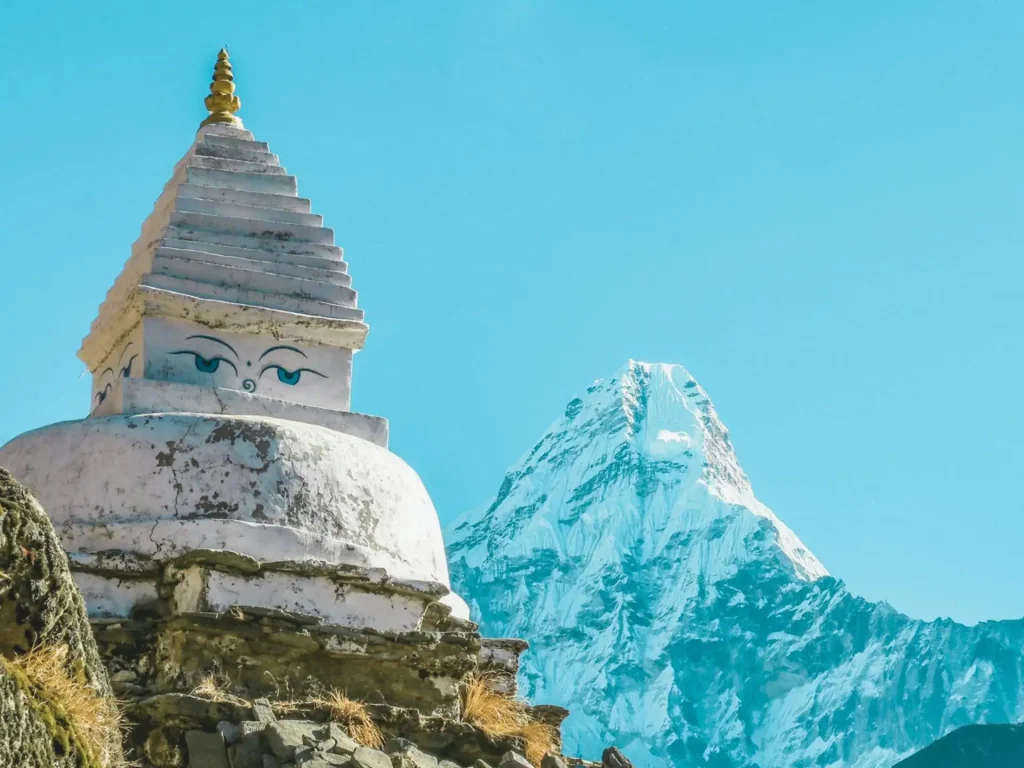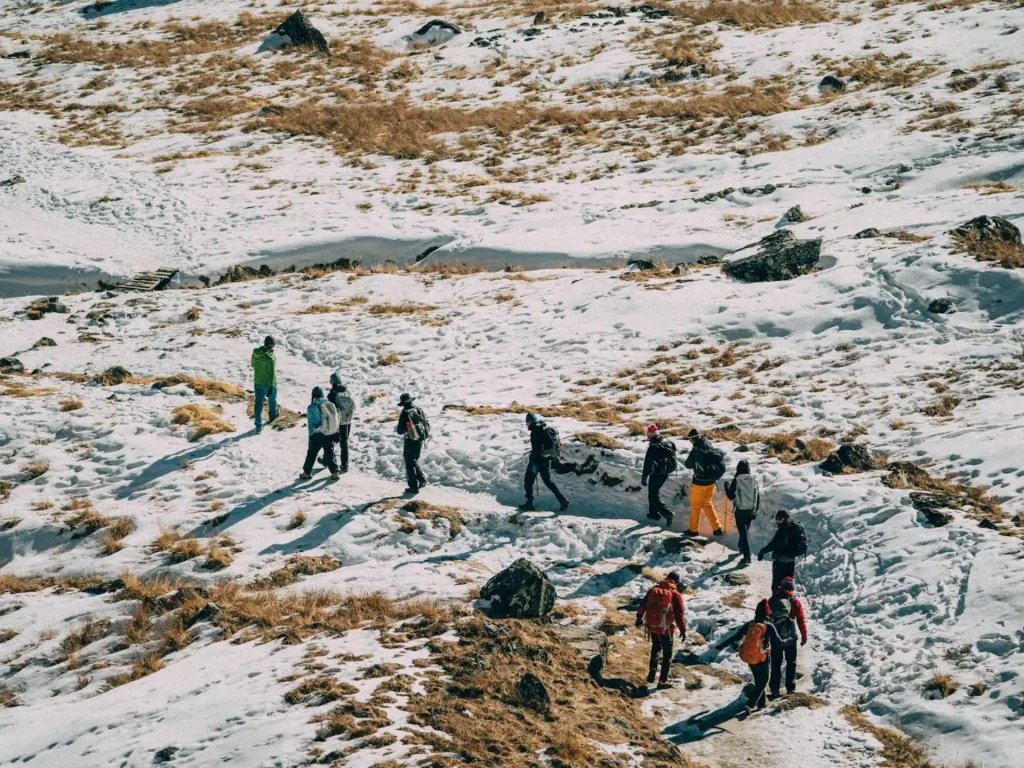Culture and Lifestyle of Sherpa People in the Everest Region

Nestled among the towering peaks of the Himalayas, the Sherpa people have a rich tapestry of culture, resilience, and deep-rooted traditions that have flourished in the Everest region for centuries. Known primarily as expert mountaineers and guides, the Sherpas possess a unique cultural identity shaped by their spiritual beliefs, communal values, and intimate relationship with their majestic landscapes.
Everest region trek routes in Nepal not only unveil stunning vistas but also offer a glimpse into the vibrant lives of the Sherpas, whose unwavering spirit and heritage continue to thrive amidst the challenges of high-altitude living.
In this article, I’ll share cultural insights into the Sherpa people in the Everest Region and how their traditions, beliefs, and way of life enrich the trekking experience for anyone looking to explore this majestic part of Nepal.
Who Are the Sherpa People?
The Sherpa people are an indigenous ethnic group native to the mountainous regions of Nepal, specifically the Everest region. Known for their exceptional mountaineering skills, the Sherpas have become legendary figures in high-altitude trekking and climbing. However, their identity goes far beyond their role as mountain guides. The Sherpas have a rich cultural heritage, a deep spiritual connection to the land, and a unique lifestyle shaped by the challenges of living in the Himalayas.
Originally, the Sherpa people migrated from eastern Tibet to the Solukhumbu region of Nepal, bringing their Tibetan Buddhist traditions and a way of life deeply influenced by the harsh, high-altitude environment. The name "Sherpa" itself is derived from the Tibetan words "Shar" (east) and "Pa" (people), meaning "people from the east." According to the 2001 Nepal Census, the Sherpa Population was 130,637 people (0.45% of the population of Nepal) with the majority of people 16.6% residing in the Khumbu Region. (Souce: Wikipedia).
Sherpa Culture and Traditions
Festivals of the Sherpa People

Festivals are an integral part of Sherpa culture, offering a unique glimpse into their religious beliefs and communal spirit. The Sherpa people celebrate several vibrant festivals throughout the year, many of which are tied to Tibetan Buddhist traditions. These festivals are marked by rituals, prayers, traditional dances, and feasts, bringing the entire community together. Two of the most significant festivals celebrated by Sherpas include:
1. Dumji Festival: Honoring Guru Rinpoche
Dumji is another important festival celebrated by Sherpa communities in the Everest region, dedicated to honoring Guru Rinpoche, also known as Padmasambhava, the founder of Tibetan Buddhism. This festival is celebrated in June or July and is held in villages such as Namche, Pangboche, Thame, and Khumjung. Dumji serves to protect the village from harm and to ensure the spiritual well-being of the people.
Dumji involves several days of rituals, dances, and prayers, performed by the monks and local Sherpa families. One of the central aspects of the festival is the performance of masked dances, similar to those seen during Mani Rimdu. These dances represent the triumph of good over evil and are believed to ward off negative forces that could bring misfortune to the village. Each village celebrates Dumji slightly differently, with some communities emphasizing communal feasting and drinking, while others focus more on the spiritual aspects of the festival.
Dumji is a joyous occasion where Sherpa families come together to celebrate their shared faith and culture. For trekkers, witnessing Dumji provides a unique insight into the rituals and communal bonds that define Sherpa life in the Everest region.
2. Mani Rimdu: The Most Significant Festival
One of the most important and widely celebrated festivals among the Sherpa people is Mani Rimdu, a three-day Buddhist celebration held in the Tengboche Monastery, as well as other monasteries in the Everest Region. Mani Rimdu typically takes place in October or November, coinciding with the Tibetan lunar calendar.
Mani Rimdu is a spiritual festival that marks the victory of Buddhism over the ancient forces of evil. It is a time for prayer, meditation, and the performance of sacred rituals to bless the land and all living beings. The festival begins with the blessing ceremonies led by the monks, where they prepare mandalas, symbols, and offerings to the gods. These intricate sand mandalas represent Buddhist cosmology and are carefully constructed over several days, only to be dismantled at the festival's end, symbolizing life's impermanence.
The highlight of Mani Rimdu is the masked dances, or Cham dances, performed by the monks. Dressed in elaborate costumes, they reenact stories of Buddhist mythology, portraying various gods, demons, and spirits.
Trekkers who are in the Everest region during this time can witness this once-in-a-lifetime experience, as the monastery comes alive with music, chants, and vibrant colors. Mani Rimdu offers a profound insight into the spiritual life of the Sherpa people and their deep reverence for Buddhism.
3. Losar: The Tibetan New Year
Another major festival celebrated by the Sherpa people is Losar, the Tibetan New Year. Losar is typically celebrated in February and marks the beginning of the lunar calendar. This festival is a time of joy, renewal, and celebration, as families clean their homes, offer prayers, and perform rituals to ward off evil spirits and welcome good fortune for the coming year.
Losar is celebrated with great enthusiasm in Sherpa households, where families prepare special meals, burn incense, and make offerings to the gods and ancestors. Traditional butter lamps are lit in homes and monasteries to symbolize the removal of darkness and ignorance from the world. The first day of Losar is dedicated to religious observances, with Sherpas visiting monasteries to receive blessings and participate in prayer ceremonies.
The festival also involves family feasts, where traditional Sherpa foods like tsampa (roasted barley flour), yak butter tea, and dried meat are shared. People wear their finest clothing, often adorned with jewelry and prayer beads. On the second and third days of Losar, the celebrations become more festive, with dances, songs, and games. Communities gather to wish each other prosperity, health, and happiness for the coming year. Trekkers in the Everest region during Losar will experience the warm hospitality of the Sherpa people, who often invite visitors to join in their celebrations.
Spirituality and Buddhism
The cornerstone of Sherpa culture is their strong connection to Tibetan Buddhism. Their daily lives, festivals, and even their mountaineering activities are deeply influenced by religious beliefs. Sherpas believe that the mountains, particularly Mount Everest (known locally as Chomolungma), are sacred, and they perform rituals to seek blessings from the mountain deities before embarking on any expedition.
Monasteries and Gompas (Buddhist temples) are central to the community, with lamas (spiritual leaders) playing an important role in guiding the religious and social lives of the Sherpa people. Monasteries like Tengboche and Pangboche are significant spiritual landmarks in the region and serve as places of worship, meditation, and celebration.
Read more on Religious Monasteries in the Everest Region.
Mountaineering as a Cultural Identity
The Sherpa people's mountaineering expertise is world-renowned, but for them, it is more than just a profession. Climbing mountains is deeply connected to their culture and spiritual beliefs. The Sherpas see their role in guiding climbers up peaks like Everest as a continuation of their respect for the mountains, and they often perform puja ceremonies to seek safe passage and blessings from the mountain gods before any ascent.
Daily Life of the Sherpas in the Everest Region
Farming and Livestock
Though the Everest region is known for its high altitudes and often harsh weather, the Sherpa people still practice subsistence farming. Their agricultural activities are often limited to growing crops like potatoes, barley, buckwheat, and turnips, which can withstand the colder temperatures of the region. The short growing season means that Sherpa farmers must work efficiently during the warmer months to ensure a sufficient harvest to sustain their families through the harsh winter.
Yak herding plays a vital role in the daily lives of Sherpas. Yaks and dzo (a yak-cow hybrid) are essential for transporting goods and providing milk, meat, and wool for clothing. Sherpa families also maintain chickens and other livestock for additional food sources, including eggs and meat.
Sherpa Homes and Family Life
Traditional Sherpa homes are simple yet practical, built from stone with slate or thatched roofs designed to withstand the cold. The homes typically have small windows to keep out the wind and cold, and a central fireplace is used for heating and cooking. Sherpa homes are often multigenerational, with grandparents, parents, and children all living under the same roof, reflecting the importance of family and community in Sherpa culture.
The Sherpa family structure is tightly knit, with each family member playing a role in the household's daily survival. Children are introduced to chores and responsibilities from a young age, such as tending to animals, gathering firewood, or helping with farming tasks. Women are often responsible for household duties, including cooking, cleaning, and taking care of children, while men manage more physically demanding tasks such as yak herding or guiding trekking groups.
Religion and Spiritual Practices

Buddhism is an integral part of Sherpa's life, and religious devotion is evident in their daily routines. Many Sherpa families start their day with prayers, chanting mantras, and making offerings at small household shrines. Prayer flags, mani stones, and stupas dot the landscape of the Everest region, symbolizing the Sherpa people's deep spirituality and belief in the power of prayers and positive intentions to protect their families and the land.
Tourism Industry
When Sherpas became internationally known for their role as expert guides on expeditions to Everest, tourism became an essential part of their livelihood. Many Sherpas now work as porters, guides, or lodge owners, catering to the growing number of trekkers and climbers who visit the Everest region each year.

In villages like Namche Bazaar and Lukla, Sherpa families operate guesthouses, tea houses, and shops, providing accommodations and supplies to trekkers. Tourism has not only become a vital source of income for the Sherpa people but has also allowed them to share their rich culture and traditions with visitors from around the world. Sherpa guides, renowned for their knowledge of the terrain and mountaineering skills, play a pivotal role in ensuring the safety and success of those who attempt to scale Mount Everest and other Himalayan peaks.
Despite the modernization brought about by tourism, the Sherpa people continue to maintain a balance between their traditional lifestyle and the demands of a rapidly changing world, preserving their unique culture and strong community values.
Cultural Dress of Sherpa People
The traditional dress of the Sherpa people is designed to meet the practical needs of the harsh Himalayan climate while also reflecting their cultural identity and heritage.
Here are the key traditional clothing items worn by the Sherpa people:
Chhuba: The Chhuba is a long-sleeved robe made from thick wool and is one of the most recognizable traditional Sherpa garments. Both men and women wear the Chhuba, which is tied around the waist, creating a large pocket in the front. This pocket is used to carry small items, making it highly practical for daily activities.
Tolung: The Tolung is a type of woolen shirt worn underneath the Chhuba. It serves as an extra layer of insulation, providing added warmth during the cold months in the Everest region.
Raatuk: The Raatuk is a traditional Sherpa hat made from yak wool or fur. It is often worn to protect against the bitter winds at high altitudes. The hat is not only functional but also has cultural significance, symbolizing the resilience and strength of the Sherpa people.
Chubba Kanam: The Chubba Kanam is a variant of the Chhuba worn during special occasions or by more wealthy families. It is made from finer materials and may feature intricate designs, making it a symbol of status and prestige within the community.
Tetung: The Tetung is a woolen pant worn by Sherpa men, usually paired with the Chhuba. It is crafted from thick fabric to provide warmth and durability, essential for the rugged terrain of the Everest region.
Sherpa Cuisine
Sherpa cuisine is a reflection of the region's high-altitude environment, harsh climate, and self-sustaining agricultural practices. It is designed to provide the nutrition and warmth needed to thrive in the challenging conditions of the Himalayas. The food is simple yet hearty, deeply rooted in the local ingredients available in the Everest region, and influenced by Tibetan and Nepali culinary traditions.
The primary staples of Sherpa food are potatoes, barley, and buckwheat, which are cultivated in the region's high-altitude fields. Dishes like Rildok (a traditional potato-based dumpling soup) and Shyakpa (a hearty stew made with vegetables, meat, and dough) are commonly consumed, providing much-needed energy and warmth for the Sherpa people.
Tsampa, a roasted barley flour, is another key ingredient in Sherpa cuisine. It is often mixed with butter tea or water to form a thick paste that serves as a quick, energy-packed meal for Sherpas working in the fields or trekking in the mountains.
Butter Tea: One of the most iconic elements of Sherpa cuisine is butter tea or po cha. Made from black tea, yak butter, and salt, this creamy beverage is a staple in Sherpa households. It’s consumed multiple times a day, especially during the cold winter months, as it provides essential calories and helps combat the cold at high altitudes. Butter tea is also offered to guests as a gesture of hospitality and is often served alongside meals.
Momo (Dumplings): A favorite among Sherpa people and trekkers alike, momos are Tibetan-style dumplings filled with meat or vegetables, usually served with a spicy dipping sauce. These flavorful bites are often steamed or fried and are widely available in tea houses and restaurants throughout the Everest region.
The Resilience of the Sherpa People
The Sherpa people are renowned not only for their exceptional mountaineering skills but also for their extraordinary resilience in the face of the harsh, high-altitude conditions of the Himalayas. Living in some of the most challenging environments on Earth, the Sherpas have developed a strength of body, mind, and spirit that has enabled them to thrive in these extreme conditions for generations.
Mountaineering and Guiding Expertise

The Sherpas’ resilience is also demonstrated in their long-standing tradition of mountaineering. For many Sherpa families, guiding climbers up Everest and other high peaks is a way of life. Sherpa guides are known for their strength, stamina, and ability to navigate treacherous terrain, often risking their lives to ensure the safety of their clients.
Despite the dangers of high-altitude climbing, Sherpas continue to serve as guides and porters, often ascending Everest multiple times in their careers. Tenzing Norgay, one of the first two climbers to summit Mount Everest alongside Sir Edmund Hillary in 1953, is a symbol of Sherpa's endurance and courage. His achievement marked the beginning of the Sherpa legacy in mountaineering, a legacy that has continued to grow, with Sherpas now regarded as the world's most skilled high-altitude climbers.
Surviving Harsh Conditions
The harsh climate of the Everest region presents daily challenges for the Sherpa people. The freezing temperatures, long winters, and rugged terrain make farming difficult and access to resources limited. Despite these challenges, Sherpas have managed to develop a sustainable way of life, relying on their knowledge of the land and their subsistence farming of hardy crops like potatoes, barley, and buckwheat.
Their homes, built from stone and wood, are designed to withstand the cold and provide warmth during the harsh winters. The Sherpas’ diet, rich in nutritious local foods like Tsampa and yak butter, helps them maintain energy and strength in their demanding environment.
Adapting to High Altitude
One of the most remarkable aspects of Sherpa's resilience is its natural ability to function at high altitudes. Sherpas have lived in the Everest region—which averages elevations of over 3,500 meters (11,482 feet)—for centuries, and over time, they have adapted to the low oxygen levels of the thin mountain air.
This physiological advantage enables Sherpas to work in conditions where others might struggle with altitude sickness and extreme cold. Their ability to carry heavy loads across dangerous mountain passes and their agility on steep, icy slopes make them invaluable in mountaineering and trekking expeditions, especially on challenging peaks like Mount Everest.
Cultural Resilience
The Sherpas' ability to preserve their cultural identity while adapting to modern changes is another testament to their resilience. While the region has seen an influx of tourism, and many Sherpas now work in the trekking and mountaineering industries, they have maintained their Buddhist traditions, their respect for nature, and their strong sense of community.
Sherpa families continue to pass down their language, rituals, and cultural values to the younger generations, ensuring that their heritage remains intact despite external influences. This cultural resilience is visible in their festivals, their traditional dress, and their spiritual practices, all of which remain central to Sherpa's life.
Conclusion
Trekking through the Everest region isn’t just about scaling heights and conquering trails, it’s about immersing yourself in the cultural insights of Sherpa communities that have thrived in the shadow of the world’s highest peaks. Their unique blend of spirituality, tradition, and resilience creates an enriching experience for trekkers seeking more than just adventure.
If you’re planning a trek in the Everest region, I encourage you to take time to engage with the Sherpa culture, learn their stories, and understand their way of life. You’ll walk away not only with memories of spectacular landscapes but also with a deeper appreciation of the people who call these mountains home.
